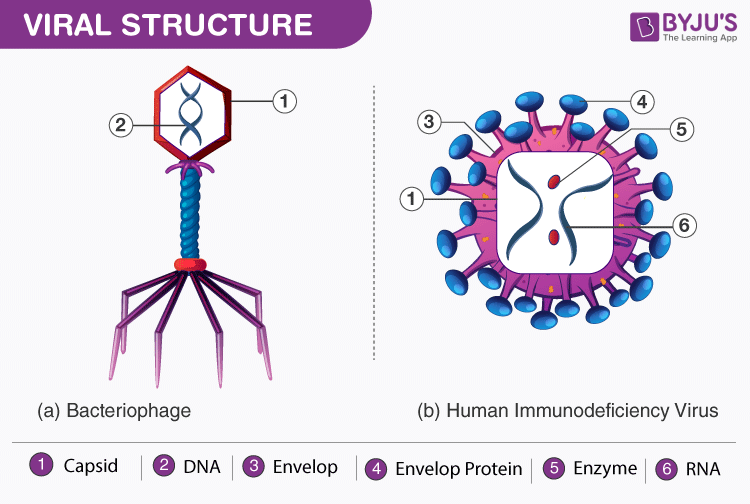What is a virus?
Viruses are microscopic structures that can replicate only inside a host cell. Outside the host cell, they are considered non-living things. Thus, they cannot be placed as non-living or living beings.
It is a non-cellular structure that has genetic material and proteins. Also, they can replicate and attack the living cells of plants, animals and other microbes.
What is a virion?
Virion is different from a virus. It is nothing but a virus in an extracellular phase. Furthermore, it is a fully furnished viral molecule consisting of DNA or RNA material. It is also encapsulated by an external protein shell called a capsid. Mostly, these virions are spherical or rod-shaped structures.
They usually provide a safe passage from the initial host to the second host. Also, they shield the genetic material from external damage.

Comparison between Virus and Virion
Virus |
Virion |
| Viruses are nucleoproteins. They are non-cellular structures with infectious genetic material. | Virions are capsid-encapsulated viruses with DNA or RNA molecules. It has both nucleic acid as well as protein layers. |
| They are microscopic intracellular parasites. | They are an extracellular form of viruses. |
| They are tiny structures of different shapes. They can be filamentous, helical, isometric, enveloped, etc. | They are usually spheroidal in shape. Virions of most plant viruses are rod-shaped. |
Refer: Virology
Frequently Asked Questions
What is a viroid?
Viroids are single-stranded RNA structures lacking any protective layer. They can infect only plant cells. Whereas viruses can infect plant, animal and bacterial cells. They are dependent on plant microbes for their replication.
What is the difference between a virus and a bacteria?
The fundamental difference is that bacteria can live both inside and outside the host. They are free-living microorganisms. In contrast, we can’t classify viruses as either living or non-living. Also, they are comparatively bigger than most viruses.
What is a bacteriophage?
Their structure includes a head and tail attached by a small collar. They have either DNA or RNA as genetic material.

Also Read: Differences between Virus and Bacteria
Visit BYJU’S Biology for more interesting topics
Comments